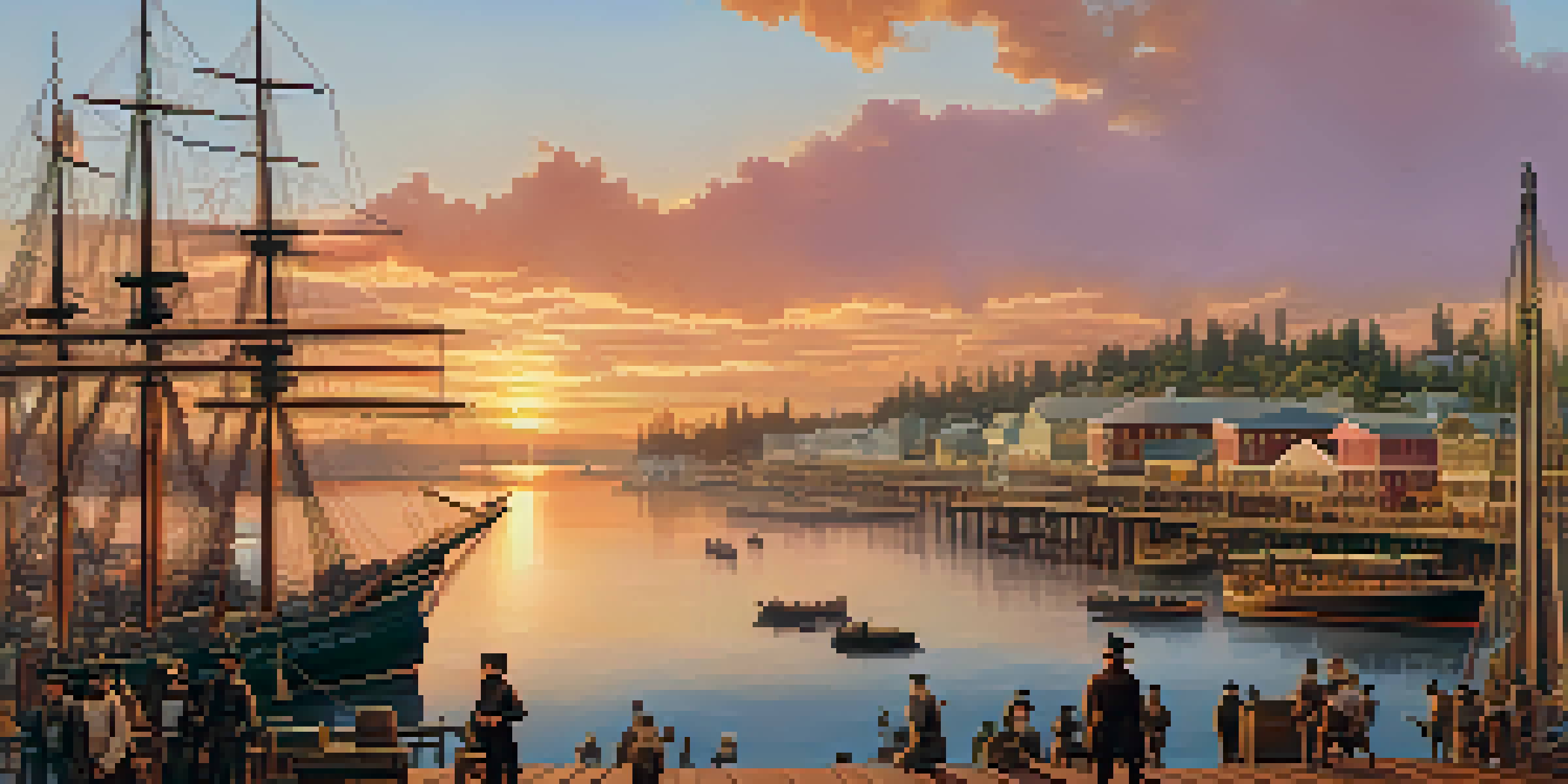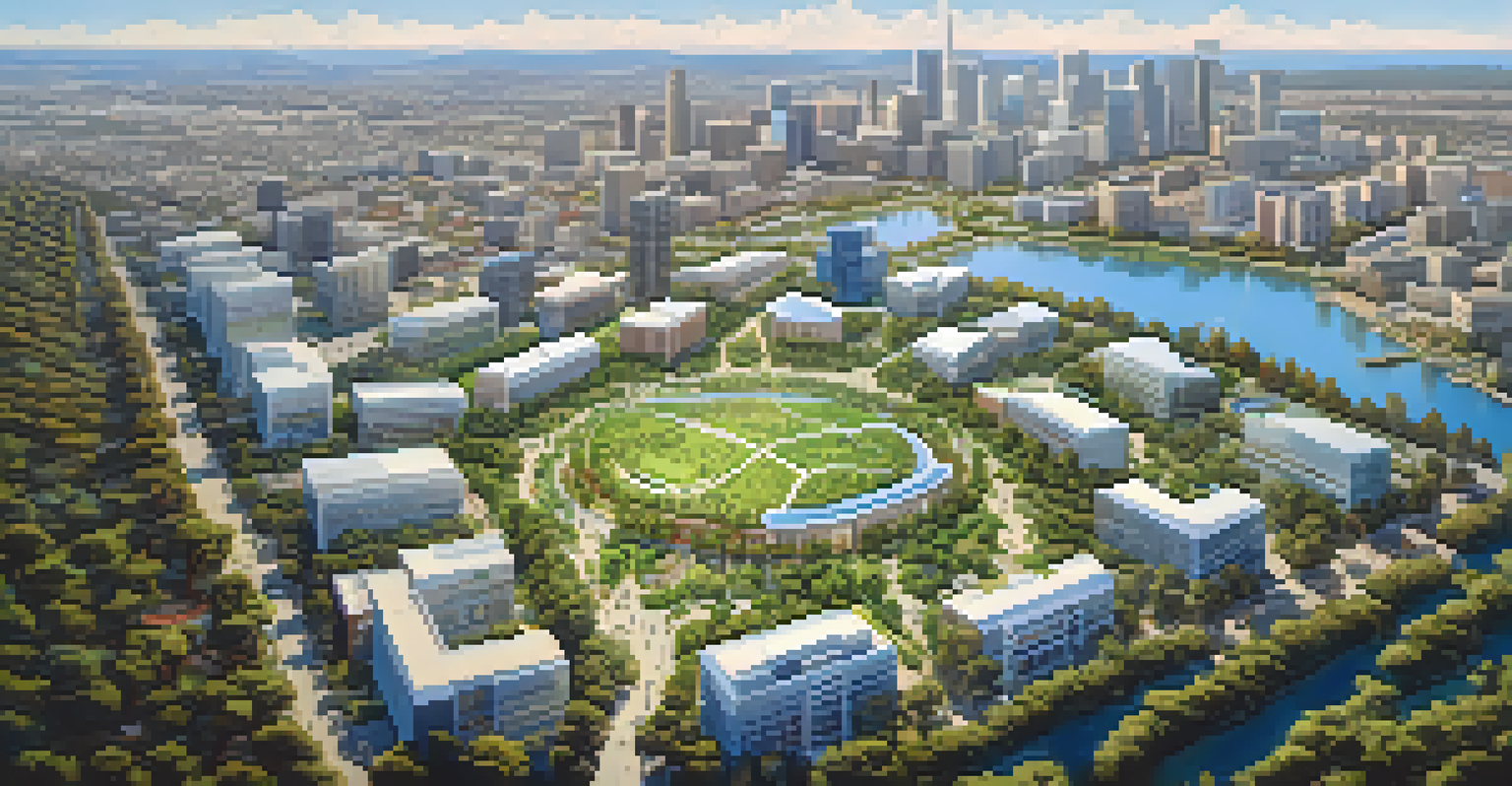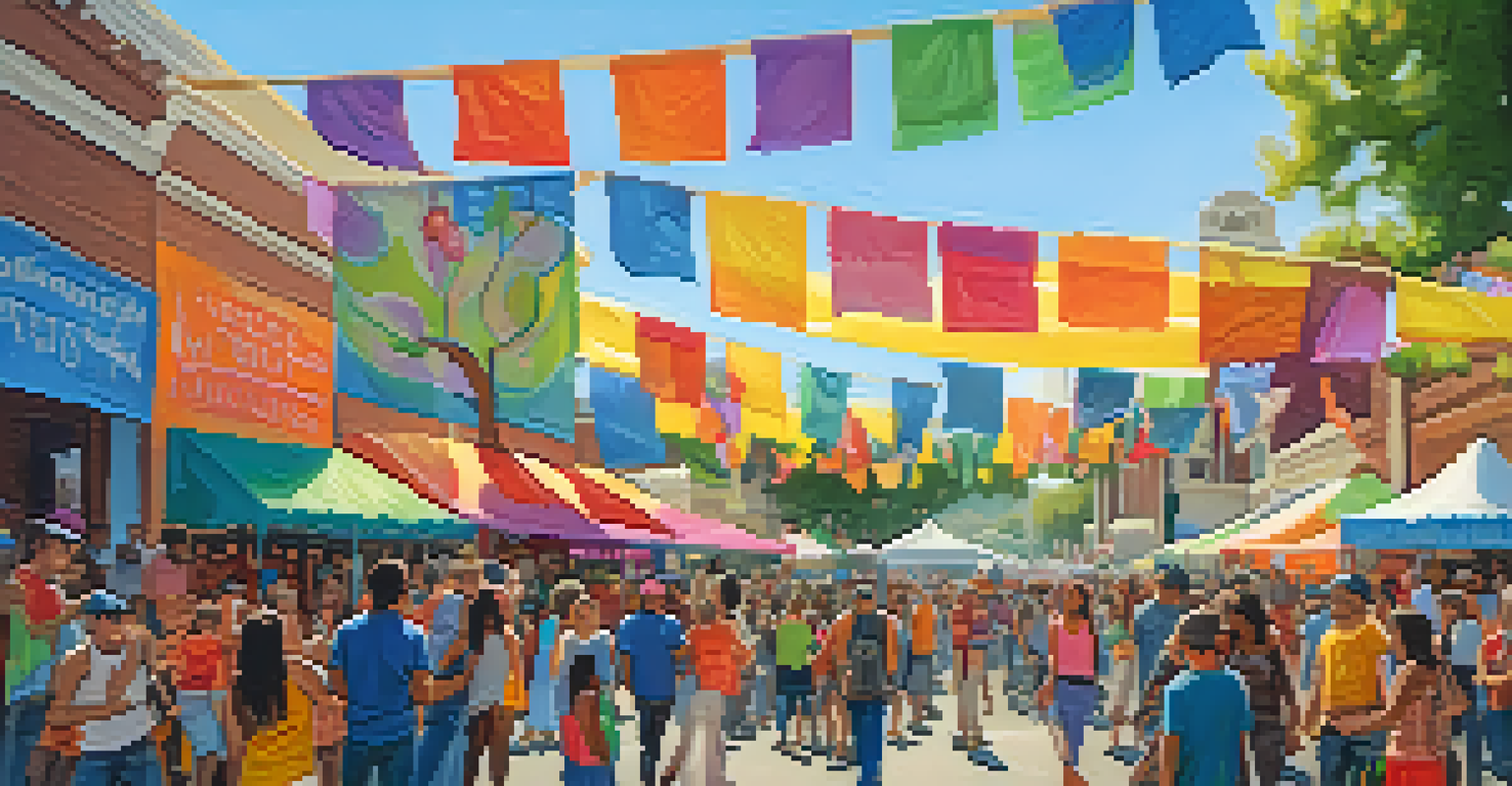Modern Redwood City: A Historical Retrospective

The Origins of Redwood City: A Brief Overview
Redwood City, nestled on the San Francisco Peninsula, has a history that dates back to the mid-19th century. Originally inhabited by the native Ohlone people, the area began to change dramatically with the arrival of Spanish explorers and later American settlers. The city was officially founded in 1867 and quickly became a hub for shipping and lumber due to its proximity to the redwood forests.
The great thing about Redwood City is that it combines the charm of a small town with the opportunities of a vibrant city.
During this period, the city’s waterfront was bustling with activity as ships would dock to transport goods. The construction of the railroad further accelerated economic growth, connecting Redwood City with larger markets. This set the stage for a vibrant community that embraced both its natural resources and its strategic location.
As the decades rolled on, Redwood City transitioned from a lumber town to a bustling urban center. The remnants of its historical roots can still be seen in the charming architecture and the layout of the downtown area, which reflects the city’s rich heritage.
The Gold Rush Era: A Catalyst for Growth
The California Gold Rush of 1849 acted as a significant catalyst for Redwood City's growth. Although the city itself was not a gold mine, its location made it a vital stop for those heading to the gold fields. This influx of prospectors and settlers brought new opportunities and challenges, forever changing the landscape of the region.

With the surge in population came the establishment of businesses and services catering to the needs of the new residents. Saloons, general stores, and hotels popped up almost overnight, transforming Redwood City into a bustling commercial hub. This era laid the groundwork for the diverse economy we see today.
Redwood City's Rich Historical Roots
The city has evolved from a lumber hub in the 19th century to a vibrant urban center, reflecting its diverse history.
As the Gold Rush waned, many settled permanently in the area, contributing to the cultural mosaic that defines Redwood City. Their legacy is evident in the community's ongoing commitment to growth and innovation, which continues to shape the city's evolution.
The Rise of Industry: A New Chapter
In the late 19th and early 20th centuries, Redwood City saw a significant shift towards industrialization. The establishment of various manufacturing plants, including shipbuilding and agricultural processing, created numerous job opportunities for local residents. This industrial boom attracted a diverse workforce, further enriching the community's cultural fabric.
In a rapidly changing world, the best way to predict the future is to create it.
As industries flourished, so did the need for infrastructure. Roads, schools, and public services expanded to accommodate the growing population. This period marked a transition from a primarily agricultural economy to one that embraced multiple sectors, laying the foundation for modern Redwood City.
The industrial growth also spurred residential development, with neighborhoods popping up to house workers. This mix of industry and community set the stage for Redwood City to evolve into a thriving urban center, balancing its historical roots with new opportunities.
The Mid-20th Century: Challenges and Changes
The mid-20th century brought both challenges and changes to Redwood City. With the post-World War II boom, many cities in America, including Redwood City, faced the pressures of urbanization and suburban sprawl. This led to a significant increase in housing demand, impacting the city’s landscape and community dynamics.
During this time, the city also experienced economic shifts as industries began to change. The decline of traditional manufacturing jobs opened the door for new sectors, particularly technology. This transition marked the beginning of Redwood City’s journey into becoming a key player in Silicon Valley.
Tech Growth in Silicon Valley
Redwood City has embraced its role in Silicon Valley, attracting tech companies and fostering a modern workforce.
Despite the challenges, the community rallied to adapt to these changes. Efforts to revitalize downtown and enhance public spaces helped maintain the city’s charm while accommodating growth. This period of transformation laid the groundwork for the Redwood City we know today.
Embracing Technology: The Silicon Valley Connection
As Silicon Valley began to emerge as a global technology hub, Redwood City positioned itself as an integral part of this transformation. The city attracted tech companies and startups, capitalizing on its strategic location and skilled workforce. This influx not only boosted the local economy but also changed the demographic landscape significantly.
With tech companies setting up shop, the city underwent significant modernization. Investment in infrastructure, public transportation, and community amenities ensured that Redwood City could support its growing population. The blend of innovation and tradition made it a desirable place for professionals and families alike.
Today, Redwood City is known for its vibrant tech scene, fostering collaboration and creativity. This evolution reflects the city’s ability to embrace change while honoring its historical roots, creating a unique balance that appeals to residents and visitors alike.
Cultural Renaissance: Celebrating Diversity
In recent years, Redwood City has embraced its cultural diversity with a renewed focus on community engagement and celebration. Festivals, art shows, and cultural events now abound, showcasing the rich tapestry of traditions that residents bring to the city. This cultural renaissance has fostered a sense of belonging and pride among the community.
The city’s commitment to inclusivity is evident in its support for local artists and cultural organizations. Public art installations and community-driven projects enhance the city’s aesthetic while telling the stories of its residents. These initiatives not only enrich the cultural landscape but also encourage community participation.
Cultural Diversity and Community Pride
The city celebrates its cultural diversity through festivals and community initiatives, enhancing local identity and belonging.
As Redwood City continues to grow, its dedication to celebrating diversity remains a cornerstone of its identity. This vibrant cultural scene not only attracts visitors but also strengthens the bonds among residents, making Redwood City a truly unique place to live and thrive.
Looking Ahead: The Future of Redwood City
As we look to the future, Redwood City stands at a crossroads of opportunity and responsibility. With ongoing development projects and a focus on sustainability, the city aims to balance growth with environmental stewardship. This commitment is crucial as the region faces challenges such as housing affordability and climate change.
Community engagement remains a priority, with city officials actively seeking input from residents on future initiatives. This collaborative approach ensures that development aligns with the values and needs of the community, fostering a sense of ownership among residents. The goal is to create a thriving environment that respects the past while embracing the future.

Ultimately, Redwood City's journey is one of resilience and adaptation. By honoring its history and embracing innovation, the city is poised to continue evolving in ways that enhance the quality of life for all its residents.